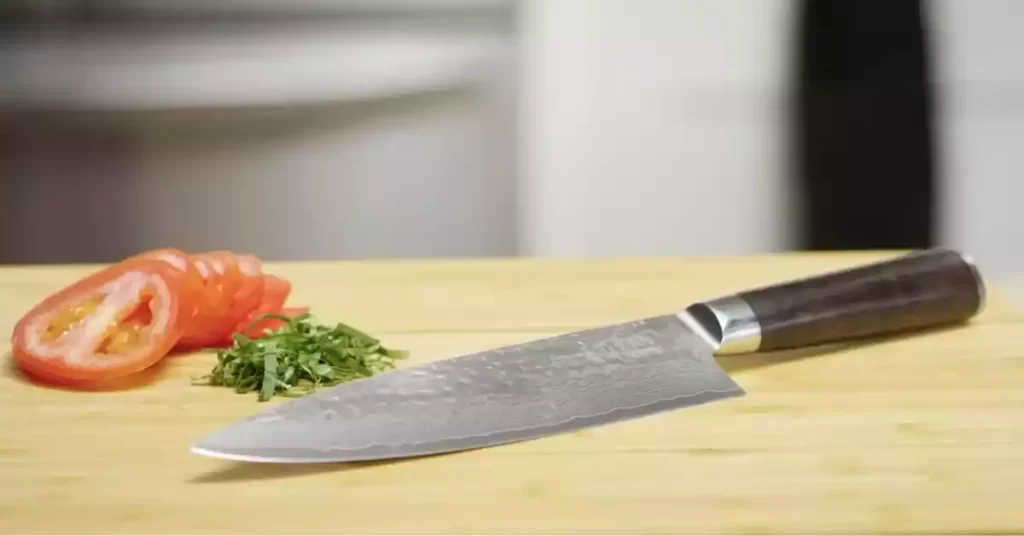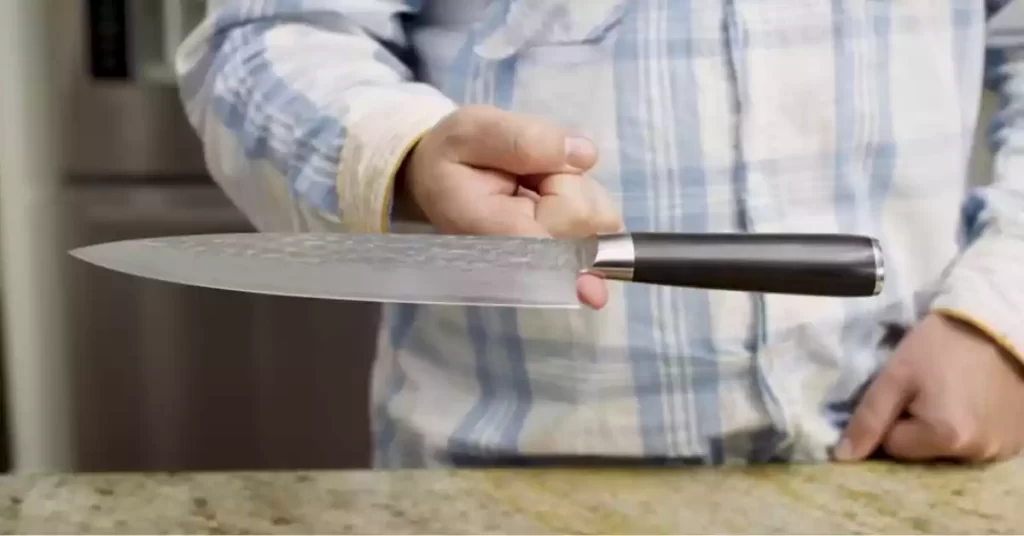The world of culinary arts is vast and varied, steeped in tradition yet constantly evolving. Among the numerous tools and techniques that have been developed and perfected over centuries, the making of kitchen knives stands out as a fascinating blend of art and science. Kan knives, in particular, have captured the attention of professional chefs and home cooks alike due to their exceptional quality and enduring legacy.
These knives are products of Japan, a country renowned for its deep-rooted craftsmanship in knife-making. Originating from Seki city, a historical hub of Samurai sword production, Kan knives carry forward a tradition of Japanese excellence, crafted meticulously to deliver unparalleled performance in modern kitchens.
The allure of Kan knives is not limited to their sharp edges or their balance. They represent an intricate process of transformation, a journey from a piece of steel to a culinary masterpiece. Each knife is a testament to the skill, dedication, and attention to detail inherent in traditional Japanese craftsmanship.
The Heritage of Kan Knives
Origin and Background
Kan knives can trace their lineage back to the ancient art of Samurai sword-making in Japan. Their inception lies in the unwavering pursuit of perfection, an ethos deeply ingrained in Japanese culture and evident in every Kan knife.
A Tradition of Craftsmanship
The tradition of Kan knife craftsmanship is a legacy carried forward through generations. Each knife embodies centuries of skill and knowledge, representing a continuous link between the past and present.
Influence of Japanese Knife-Making
Japanese knife-making is renowned for its precision, attention to detail, and innovative techniques. These qualities are reflected in every Kan knife, ensuring superior performance and durability.

The Production Location of Kan Knives
The Japanese Roots: Seki City
Seki City, situated in the heartland of Gifu Prefecture, Japan, is the epicenter of Kan knife production. This city’s legacy extends back hundreds of years, with a rich heritage in the art of swordsmithing. Seki is recognized as the City of Blades, a testament to its enduring prominence in blade-making.
For centuries, the blacksmiths of Seki honed their skills, crafting Samurai swords that were famed across feudal Japan for their superior quality and sharpness. This tradition, when combined with the techniques and technology of modern-day craftsmanship, brings us the exceptional Kan knives we know today.
Factors Behind Location Choice
Several factors contribute to Seki’s position as the preferred location for producing Kan knives. The city is renowned for its unique environmental conditions, which offer the perfect backdrop for the intricate process of knife-making. The presence of high-quality natural resources, particularly steel, makes Seki a strategic choice.
Furthermore, the city is home to generations of skilled craftsmen, whose knowledge and experience in blade-making are unmatched. The combination of these factors – location, resources, and skill – results in the creation of Kan knives, a true embodiment of Japanese excellence.

A Peek into the Kan Knife Manufacturing Process
The Journey from Steel to Knife
Transforming a piece of steel into a Kan knife is an elaborate process involving several stages, each demanding precision, expertise, and time. Initially, the chosen steel is heated and hammered to the desired thickness. Then, it is skillfully molded into the blade shape, after which it undergoes a series of treatments to increase its durability and sharpness.
The blade is then meticulously polished and sharpened to achieve that exemplary Kan knife edge. The final step involves attaching the handle, which is carefully selected to ensure balance and comfort. This process, although time-consuming, ensures that each Kan knife is a product of careful craftsmanship.
Features Defining the Kan Knife Quality
A Kan knife is characterized by its exceptional sharpness, perfect balance, and high durability. The steel used in their production is of superior quality, often high-carbon steel, known for its strength and edge retention.
The craftsmanship is precise, with each knife undergoing rigorous quality control measures. Moreover, the advanced technology employed in their creation further enhances their quality. These elements come together to form a knife that performs flawlessly, feels comfortable in the hand, and stands the test of time.
Varieties of Kan Knives and Their Specialties
Chef Knives: The Multi-Purpose Marvel
The Chef knife is a versatile tool in the lineup of Kan knives. It’s designed to perform a multitude of cutting tasks, making it an essential tool in every kitchen. From slicing meat to chopping vegetables, the Chef knife is up to the task. Its long and curved blade allows for smooth slicing and its sharp edge ensures clean cuts every time.

Nakiri Knives: The Vegetable Virtuoso
For those who frequently deal with vegetables, the Nakiri knife is a boon. With its straight edge and thin blade, it allows for precise, straight cuts, which is especially helpful when slicing vegetables. The thin, double-beveled blade makes it perfect for delicate tasks like mincing herbs or finely chopping onions. Its rectangular shape also adds to its efficiency, making it easy to scoop up chopped ingredients.
Santoku Knives: The Three-Virtues Star
The Santoku knife is a jack-of-all-trades in the Kan knife family. Its name, translating to “three virtues,” denotes its proficiency in slicing, dicing, and mincing. The unique shape of the Santoku knife, coupled with its balanced weight, makes it a go-to tool for many home cooks and professional chefs. Whether it’s chopping vegetables or slicing meat, the Santoku knife delivers outstanding performance.

The Significance of Kan Knives in Today’s Culinary World
Popularity Among Professional Chefs
Kan knives have won the hearts of professional chefs worldwide. These culinary artists appreciate the knives’ precision, sharpness, balance, and the ease with which they can be handled.
Not only do Kan knives offer high-performance cutting, but they also provide durability and longevity, making them a reliable kitchen companion in high-pressure culinary environments. Renowned chefs often regard Kan knives as extensions of their hands, attributing their culinary success in part to these excellent tools.
Rising Preference Among Home Cooks
But the fan base of Kan knives is not restricted to professional kitchens. Over recent years, home cooks have been increasingly drawn to these knives. The ease of use, aesthetic appeal, and the noticeable difference they bring to everyday cooking are factors driving their popularity in households.
Moreover, owning a Kan knife isn’t just about having a cutting tool; it’s about experiencing a piece of Japanese tradition and craftsmanship in the comfort of one’s own kitchen.
How to Care for Your Kan Knife
Cleaning and Maintenance Tips
To preserve the quality of your Kan knife and prolong its lifespan, proper care is essential. Here are some cleaning and maintenance tips: clean the knife immediately after use, using mild soap and warm water. Avoid putting it in the dishwasher, as high temperatures and harsh detergents can damage the blade and handle. Always dry the knife thoroughly after washing to prevent rust or discoloration.
Honing and Sharpening Techniques
Regular honing is recommended to keep your Kan knife in optimal condition. Honing realigns the edge of the knife without removing a significant amount of material. Sharpening, on the other hand, should be done less frequently, as it grinds away metal to produce a new, sharp edge. For both these tasks, it’s best to use tools specifically designed for Kan knives, or consider professional services.
Frequently Asked Questions
Are Kan knives suitable for beginners?
Absolutely. While Kan knives are favored by professionals, they’re equally suitable for beginners. Their sharpness and balance make them easy to handle, and their superior performance can make the cooking process smoother and more enjoyable for novices.
How often should I sharpen my Kan knife?
The frequency of sharpening depends on how often you use your knife and what you cut. Generally, a home cook might need to sharpen a Kan knife every few months, while a professional chef might need to do so more frequently. Always remember that honing is different from sharpening and should be done more often to maintain the edge.
Where can I buy genuine Kan knives?
Genuine Kan knives can be purchased directly from the manufacturer’s website or from authorized dealers. Always ensure you’re buying from a trusted source to guarantee the authenticity and quality of your Kan knife.
Final Thoughts
When investing in a Kan knife, you’re not just purchasing a tool, but a legacy. These knives are designed to last, offering you years of unmatched service if properly cared for. Considering the craftsmanship, performance, and longevity they offer, Kan knives truly provide value for money.
Every kitchen deserves a Kan knife because it transforms cooking from a routine task into a joyful experience. Their sharpness reduces the effort in cutting, their balance provides control, and their aesthetic appeal makes them a pleasure to use. Kan knives make cooking more efficient, enjoyable, and creative, be it in a professional kitchen or a home setting.

What a thoroughly dishonest piece.
Kan knives are made in China.